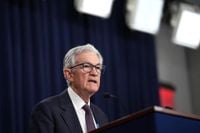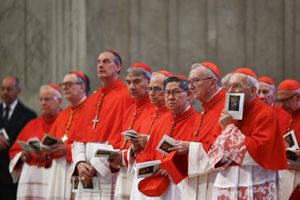The Federal Reserve left its key interest rate unchanged on Wednesday, May 7, 2025, maintaining the federal funds rate in the range of 4.25% to 4.50%. This decision marks the third consecutive meeting where the Federal Open Market Committee (FOMC) opted to pause any rate adjustments, reflecting a cautious approach amid rising economic uncertainties.
During a press conference following the FOMC meeting, Fed Chair Jerome Powell acknowledged that risks to both unemployment and inflation have increased. He stated, "The risk of higher unemployment and higher inflation has risen," indicating concerns about the potential impacts of ongoing tariff policies under the Trump administration. Powell emphasized the need for the FOMC to observe how the economy responds to these tariffs before making any significant policy changes.
Despite the Fed's decision to keep rates steady, market reactions were mixed. The NASDAQ index initially fell by 0.35% before Powell's comments, which suggested uncertainty about future rate cuts. The decline in the NASDAQ intensified after Powell expressed doubts about the likelihood of cutting rates within the year. However, the index later rebounded slightly as news broke that the Trump administration was considering tariff exemptions for certain Chinese-made products, including baby strollers and car seats.
On the other hand, the Dow Jones Industrial Average (DJIA) saw a positive shift, moving from a 0.3% gain to a 0.8% gain during Powell's address. The S&P 500 exhibited volatility, fluctuating between moderate losses and gains as the press conference unfolded.
Powell's remarks highlighted the complexities facing the Fed as it navigates its dual mandate of maximizing employment while stabilizing prices. He noted, "If the large increases in tariffs that have been announced are sustained, they're likely to generate a rise in inflation, a slowdown, and an increase in unemployment." This statement underscores the potential for stagflation—a scenario characterized by stagnant economic growth coupled with rising inflation and unemployment.
Economists have expressed a range of opinions on the Fed's current stance. Scott Anderson, chief U.S. economist at BMO Capital Markets, remarked, "The two-sided risks of the tariffs and trade war will keep the Fed on hold until it has a better feel for how the tariff-induced price hikes are spilling over into global supply chain disruptions and inflation expectations." This sentiment reflects a broader consensus that the Fed is in a holding pattern, awaiting clearer indicators before committing to rate cuts.
Market participants had anticipated that the Fed might begin cutting rates as early as July, following this meeting. The CME FedWatch Tool indicated a 71.4% probability of a rate cut by the July 30 meeting, down from 78.1% before the announcement. Meanwhile, the odds of a rate cut at the June 18 meeting dropped to 26%. This shift suggests that while traders remain hopeful for future cuts, the Fed's current posture has tempered those expectations.
Powell refrained from providing specific guidance on future rate cuts, stating, "For the time being, we're well-positioned to wait for greater clarity before considering any adjustments to our policy stance." This cautious tone reflects the Fed's desire to avoid preemptive actions that could exacerbate economic instability.
The FOMC's decision comes on the heels of recent economic data indicating a contraction in gross domestic product (GDP) during the first quarter of 2025. This marked the first negative growth since early 2022, driven by a surge in imports as businesses rushed to acquire foreign goods before tariffs increased. The Fed's policy statement acknowledged that some economic indicators have weakened, but it also highlighted that overall economic activity has continued to expand at a solid pace.
President Trump has been vocal in his criticism of Powell and the Fed's reluctance to cut rates, labeling the Fed as "stubborn" and suggesting that Powell should be "terminated." However, the Federal Reserve operates as an independent entity, designed to be insulated from political pressures. Historically, countries with more government influence over central banks tend to experience higher inflation rates, as political leaders often prioritize low interest rates to stimulate economic growth.
As the Fed navigates this landscape of uncertainty, Powell reiterated that the central bank must be vigilant in monitoring both inflation and employment metrics. He remarked, "We've judged that the risks to higher employment and higher inflation have both risen compared to March," indicating that both sides of the Fed's dual mandate are under pressure.
With the economic outlook clouded by tariff-related uncertainties, the Fed's approach appears to be one of patience and vigilance. Powell concluded the press conference by stating, "We don't feel we need to be in a hurry," emphasizing the importance of waiting for more definitive data before making any policy changes.
In summary, the Federal Reserve's decision to maintain interest rates reflects a cautious assessment of the economy amid rising risks associated with tariffs and trade policies. As market participants look ahead, the focus will remain on how these factors unfold in the coming months, influencing both economic growth and the Fed's policy decisions.




